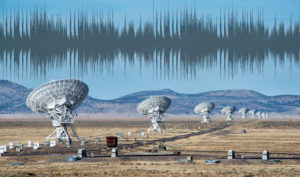The Very Large Array, just like all radio telescopes, receives signals which are transmitted from objects in space at…
Select :
asteroid collisionasteroidsastronomical distance scalesatomsbig bangblack holesbright lights in the skybrown dwarfcareerscelestial eventschecker cabscometsconstellationscosmic distancescosmic microwave backgroundcosmic rayscosmologydark energydark matterdwarf planeteartheclipseeclipticeducationexoplanetsexpansion of the universegalaxiesgeneral relativitygravitational lensgravity wavesGreat Red SpotHoaxesHubble Space Telescope (HST)Interferometerinterferometryinterstellar moleculesionosphereJupitermagnetarsmarsmeteorsMH370milky wayMilky Way Galaxymoleculesmoonmoonsneutron starneutron starsNibirunight skyparallaxphysicsplanetsplutoproperties of lightPtolemypulsarsquasarsradar astronomyRadio Astronomyradio frequency interferenceradio interferometersradio recombination line emissionRadio TelescopeSatellite DishSchwarzschild Radiusscientific methodsearch for extraterrestrial intelligenceSETIsolar systemspace probesspacecraftstar formationstarssunsupernovasupernova remnantssupernovaetelescopestime dilationTrans Neptunian Objectstwin paradoxunexplained celestial observationsVenusVery Large ArrayVery Long Baseline Array (VLBA)Voyager 1weather

How Does One Identify Radio Frequency Interference in Astronomical Measurements?
Question: Hello. This question falls under radio astronomy. I’m currently working on a project involving python programming. The goal…
How Do You Distinguish Between People-Made Signals and Those From Space?
Question: You have loads of terrestrial interference, so how do you know the signals you receive are extra terrestrial?…
How Much Interference do Radio Telescopes Receive from Earth-Moon-Earth Propagation?
Question: How much interference do the radio telescopes receive from EME propagation (Earth-Moon-Earth), and is it really a problem?…
Is Satellite Internet Service Available within the NRQZ?
Question: Is satellite internet service prohibited in the NRQZ in West Virginia? — Ron Answer: I believe that satellite…
Is There a Period When the Radio Transmission Environment in the NRQZ is “Quieter”?
Question: I know the NRAO is located in a “radio quiet zone.” Is there a time during the 24…





